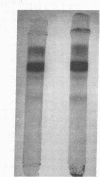Abstract
An inactive mutant form of red cell carbonic anhydrase B is described in three members of a large kindred who manifest infantile renal tubular acidosis and nerve deafness. A combination of enzymatic and immunologic investigations permitted its detection, despite the fact that both antigenic and electrophoretic properties of the mutant were identical to those of the normal form.
Full text
PDF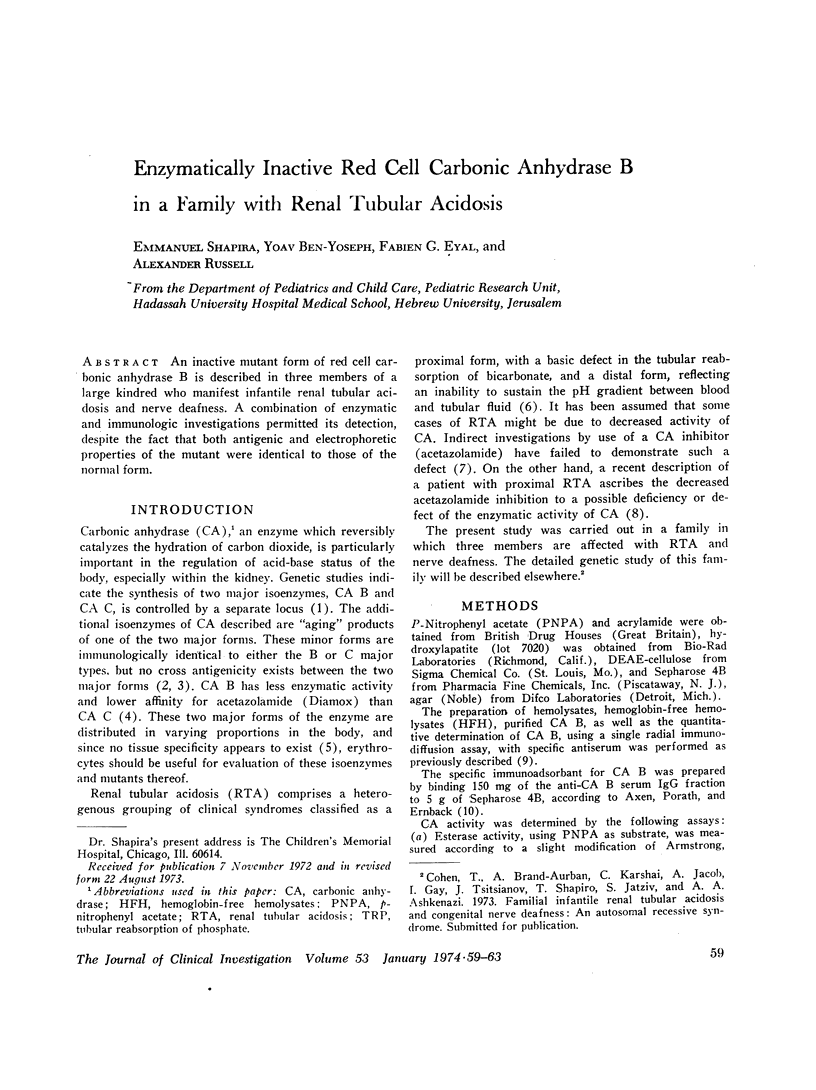
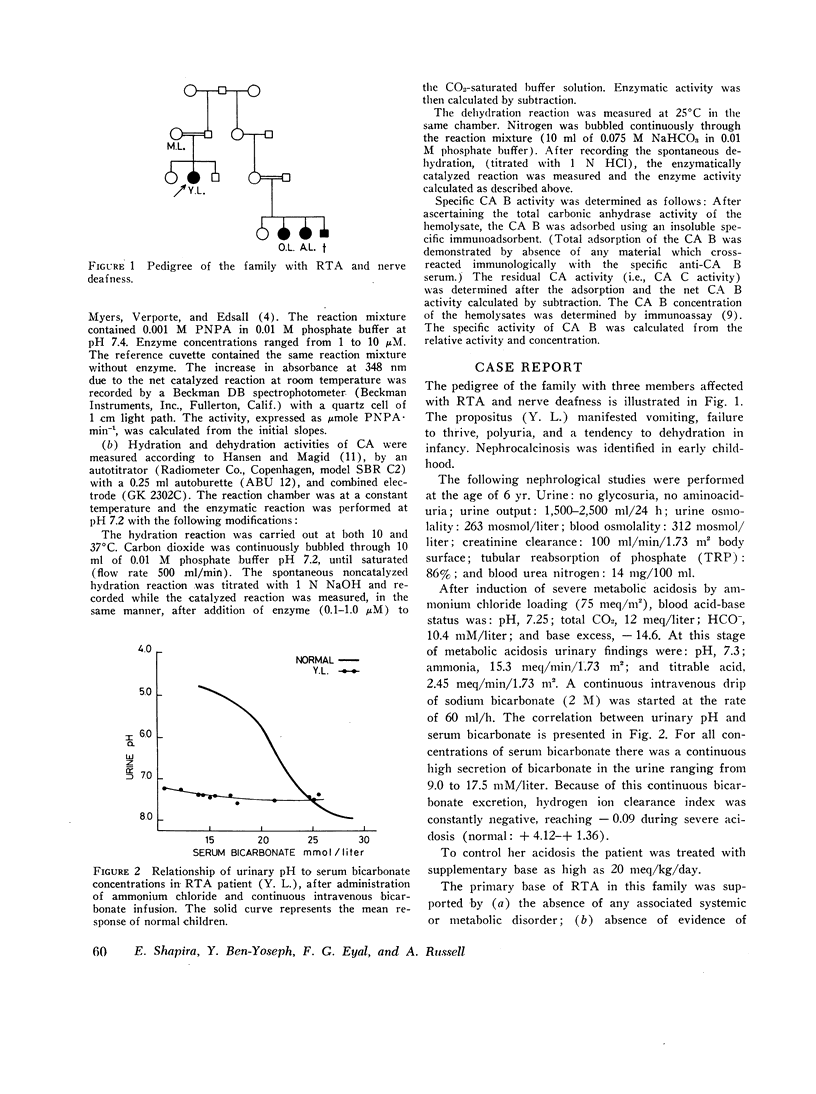
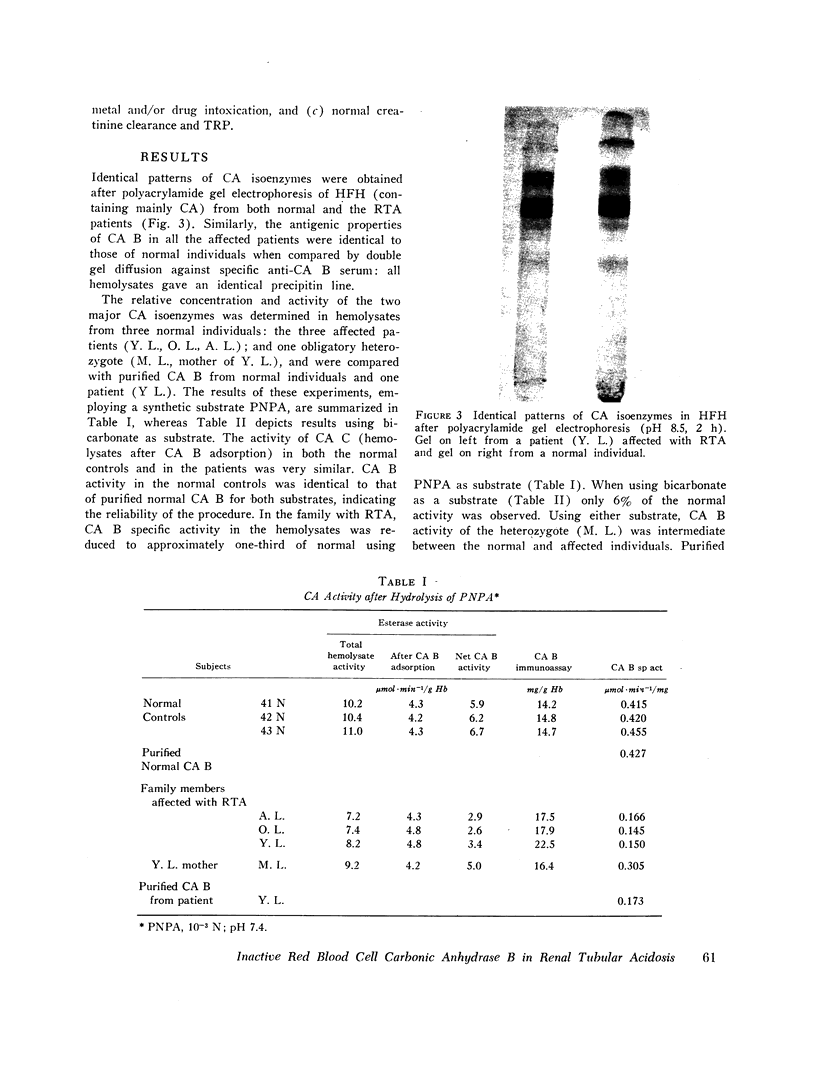
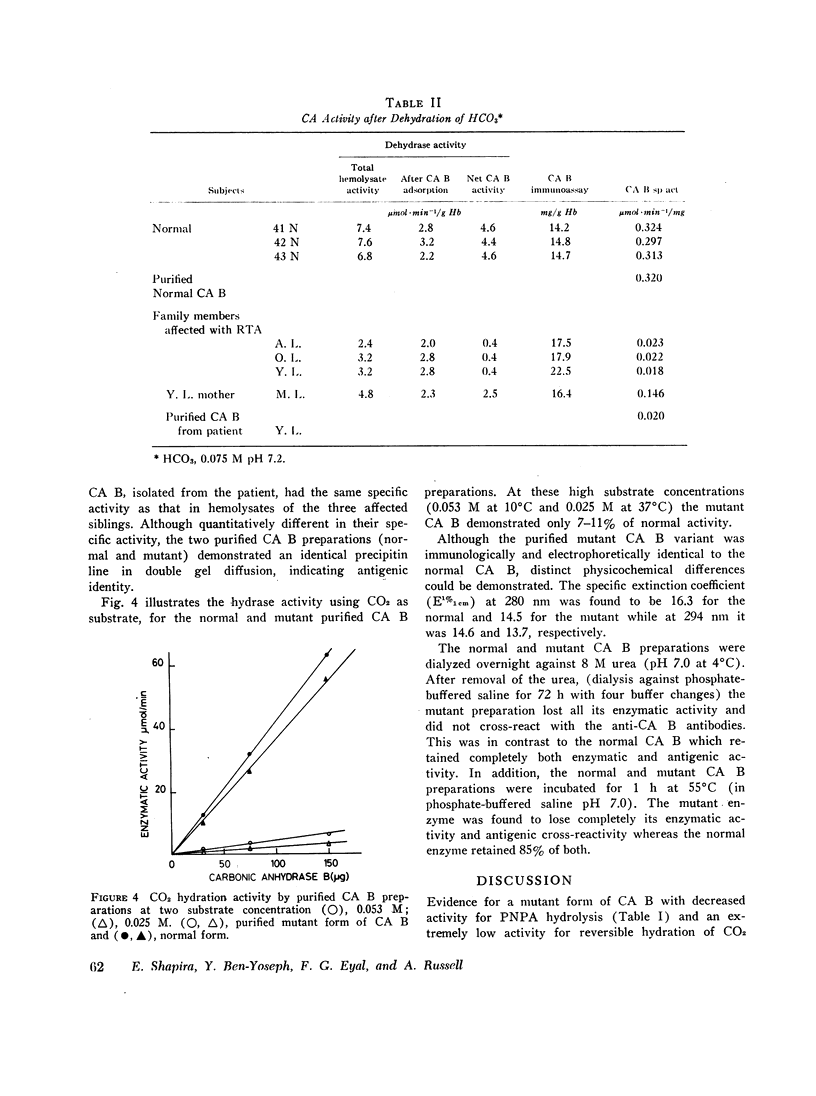
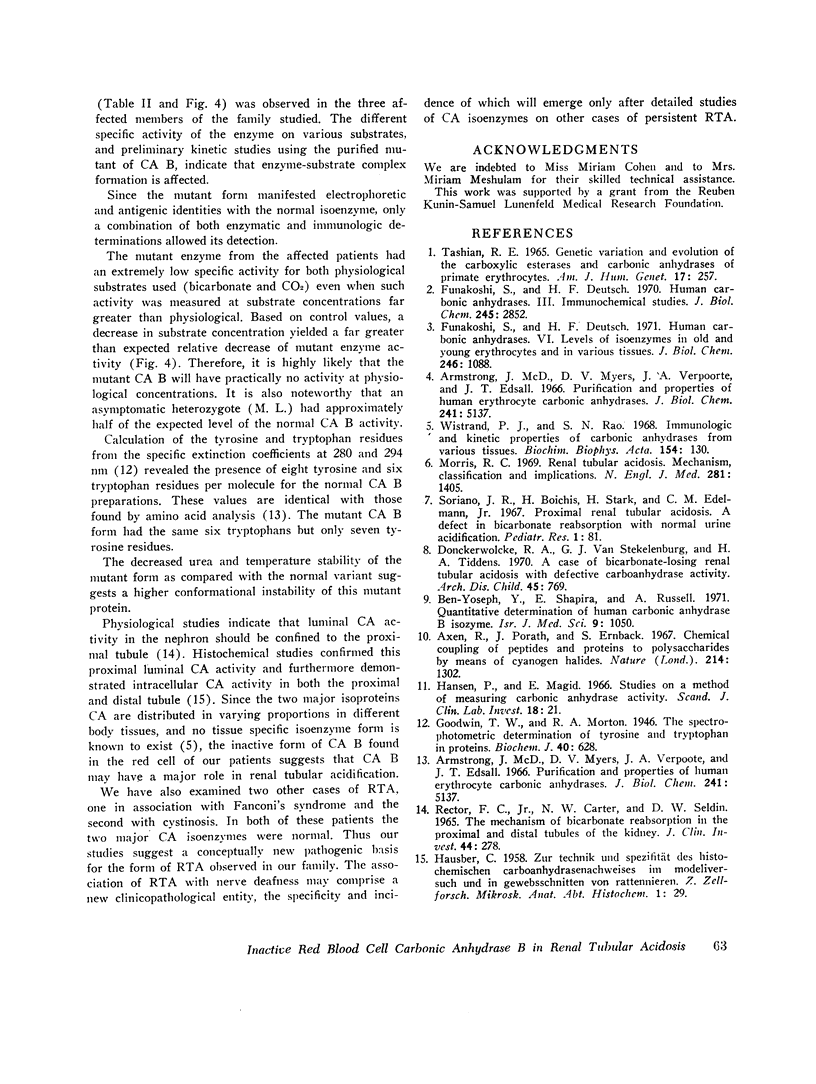
Images in this article
Selected References
These references are in PubMed. This may not be the complete list of references from this article.
- Armstrong J. M., Myers D. V., Verpoorte J. A., Edsall J. T. Purification and properties of human erythrocyte carbonic anhydrases. J Biol Chem. 1966 Nov 10;241(21):5137–5149. [PubMed] [Google Scholar]
- Armstrong J. M., Myers D. V., Verpoorte J. A., Edsall J. T. Purification and properties of human erythrocyte carbonic anhydrases. J Biol Chem. 1966 Nov 10;241(21):5137–5149. [PubMed] [Google Scholar]
- Axén R., Porath J., Ernback S. Chemical coupling of peptides and proteins to polysaccharides by means of cyanogen halides. Nature. 1967 Jun 24;214(5095):1302–1304. doi: 10.1038/2141302a0. [DOI] [PubMed] [Google Scholar]
- Ben-Yoseph Y., Shapira E., Russell A. Quantitative determination of human carbonic anhydrase B isozyme. Isr J Med Sci. 1971 Sep;7(9):1050–1054. [PubMed] [Google Scholar]
- Donckerwolcke R. A., van Stekelenburg G. J., Tiddens H. A. A case of bicarbonate-losing renal tubular acidosis with defective carboanhydrase activity. Arch Dis Child. 1970 Dec;45(244):769–773. doi: 10.1136/adc.45.244.769. [DOI] [PMC free article] [PubMed] [Google Scholar]
- Funakoshi S., Deutsch H. F. Human carbonic anhydrases. 3. Immunochemical studies. J Biol Chem. 1970 Jun 10;245(11):2852–2856. [PubMed] [Google Scholar]
- Funakoshi S., Deutsch H. F. Human carbonic anhydrases. VI. Levels of isozymes in old and young erythrocytes and in various tissues. J Biol Chem. 1971 Feb 25;246(4):1088–1092. [PubMed] [Google Scholar]
- Goodwin T. W., Morton R. A. The spectrophotometric determination of tyrosine and tryptophan in proteins. Biochem J. 1946;40(5-6):628–632. doi: 10.1042/bj0400628. [DOI] [PMC free article] [PubMed] [Google Scholar]
- Hansen P., Magid E. Studies on a method of measuring carbonic anhydrase activity. Scand J Clin Lab Invest. 1966;18(1):21–32. doi: 10.3109/00365516609065603. [DOI] [PubMed] [Google Scholar]
- Morris R. C., Jr Renal tubular acidosis. Mechanisms, classification and implications. N Engl J Med. 1969 Dec 18;281(25):1405–1413. doi: 10.1056/NEJM196912182812508. [DOI] [PubMed] [Google Scholar]
- RECTOR F. C., Jr, CARTER N. W., SELDIN D. W. THE MECHANISM OF BICARBONATE REABSORPTION IN THE PROXIMAL AND DISTAL TUBULES OF THE KIDNEY. J Clin Invest. 1965 Feb;44:278–290. doi: 10.1172/JCI105142. [DOI] [PMC free article] [PubMed] [Google Scholar]
- Rodriguez Soriano J., Boichis H., Stark H., Edelmann C. M., Jr Proximal renal tubular acidosis. A defect in bicarbonate reabsorption with normal urinary acidification. Pediatr Res. 1967 Mar;1(2):81–98. doi: 10.1203/00006450-196703000-00001. [DOI] [PubMed] [Google Scholar]
- TASHIAN R. E. GENETIC VARIATION AND EVOLUTION OF THE CARBOXYLIC ESTERASES AND CARBONIC ANHYDRASES OF PRIMATE ERYTHROCYTES. Am J Hum Genet. 1965 May;17:257–272. [PMC free article] [PubMed] [Google Scholar]
- Wistrand P. J., Rao S. N. Immunologic and kinetic properties of carbonic anhydrases from various tissues. Biochim Biophys Acta. 1968 Jan 22;154(1):130–144. doi: 10.1016/0005-2795(68)90265-1. [DOI] [PubMed] [Google Scholar]



